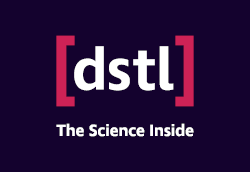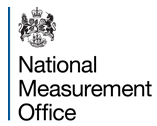Related Research Articles
The National Institute of Standards and Technology (NIST) is an agency of the United States Department of Commerce whose mission is to promote American innovation and industrial competitiveness. NIST's activities are organized into physical science laboratory programs that include nanoscale science and technology, engineering, information technology, neutron research, material measurement, and physical measurement. From 1901 to 1988, the agency was named the National Bureau of Standards.
In measurement technology and metrology, calibration is the comparison of measurement values delivered by a device under test with those of a calibration standard of known accuracy. Such a standard could be another measurement device of known accuracy, a device generating the quantity to be measured such as a voltage, a sound tone, or a physical artifact, such as a meter ruler.

Metrology is the scientific study of measurement. It establishes a common understanding of units, crucial in linking human activities. Modern metrology has its roots in the French Revolution's political motivation to standardise units in France when a length standard taken from a natural source was proposed. This led to the creation of the decimal-based metric system in 1795, establishing a set of standards for other types of measurements. Several other countries adopted the metric system between 1795 and 1875; to ensure conformity between the countries, the Bureau International des Poids et Mesures (BIPM) was established by the Metre Convention. This has evolved into the International System of Units (SI) as a result of a resolution at the 11th General Conference on Weights and Measures (CGPM) in 1960.

Pacific Northwest National Laboratory (PNNL) is one of the United States Department of Energy national laboratories, managed by the Department of Energy's (DOE) Office of Science. The main campus of the laboratory is in Richland, Washington.

The Commonwealth Scientific and Industrial Research Organisation (CSIRO) is an Australian Government agency responsible for scientific research.

Occupational hygiene is the anticipation, recognition, evaluation, control, and confirmation (ARECC) of protection from risks associated with exposures to hazards in, or arising from, the workplace that may result in injury, illness, impairment, or affect the well-being of workers and members of the community. These hazards or stressors are typically divided into the categories biological, chemical, physical, ergonomic and psychosocial. The risk of a health effect from a given stressor is a function of the hazard multiplied by the exposure to the individual or group. For chemicals, the hazard can be understood by the dose response profile most often based on toxicological studies or models. Occupational hygienists work closely with toxicologists for understanding chemical hazards, physicists for physical hazards, and physicians and microbiologists for biological hazards. Environmental and occupational hygienists are considered experts in exposure science and exposure risk management. Depending on an individual's type of job, a hygienist will apply their exposure science expertise for the protection of workers, consumers and/or communities.
The Radiological and Environmental Sciences Laboratory (RESL) is a government-owned and government-operated laboratory operated by the U.S. Department of Energy Idaho Operations Office. It reports directly to the DOE-ID Assistant Manager for Technical Programs and Operations, and is located at the IRC in Idaho Falls, Idaho. RESL and its predecessor organizations have been part of the DOE-ID since 1949.

Metrication in Australia effectively began in 1966 with the conversion to decimal currency under the auspices of the Decimal Currency Board. The conversion of measurements—metrication—commenced subsequently in 1971, under the direction of the Metric Conversion Board and actively proceeded until the Board was disbanded in 1981.

The Defence Science and Technology Laboratory (Dstl) is an executive agency of the Ministry of Defence of the United Kingdom. Its stated purpose is "to maximise the impact of science and technology for the defence and security of the UK". The agency is headed by Paul Hollinshead as its Chief Executive, with the board being chaired by Adrian Belton. Ministerial responsibility lies with the Minister for Defence Procurement.

The National Measurement and Regulation Office (NMRO) was an executive agency of the UK Government's Department for Business, Innovation and Skills (BIS). Its function were to provide a measurement infrastructure which supports innovation, facilitates fair competition, promotes international trade and protects consumers and the environment.

LGC Group, formerly the Laboratory of the Government Chemist, is an international life sciences measurement and tools company. It provides the role and duties of the UK Government Chemist, a statutory role and adviser to the government. LGC also hosts the UK's National Measurement Laboratory (NML) for chemical and bio-measurement, which performs measurements for diagnostics, advanced therapeutics, safety and security, among others.

Certified reference materials (CRMs) are 'controls' or standards used to check the quality and metrological traceability of products, to validate analytical measurement methods, or for the calibration of instruments. A certified reference material is a particular form of measurement standard.
The South African National Accreditation System (SANAS) is the official accreditation body for South Africa. Founded in 1996, SANAS is headquartered in Pretoria, South Africa. SANAS accreditation certificates are a formal recognition by the Government of South Africa that an organisation is competent to perform specific tasks.

The Faculty of Science is a constituent body of the University of New South Wales (UNSW), Australia. It is UNSW's second largest Faculty. It has over 400 academic staff and over 700 research staff and students.
Prevention through design (PtD), also called safety by design usually in Europe, is the concept of applying methods to minimize occupational hazards early in the design process, with an emphasis on optimizing employee health and safety throughout the life cycle of materials and processes. It is a concept and movement that encourages construction or product designers to "design out" health and safety risks during design development. The process also encourages the various stakeholders within a construction project to be collaborative and share the responsibilities of workers' safety evenly. The concept supports the view that along with quality, programme and cost; safety is determined during the design stage. It increases the cost-effectiveness of enhancements to occupational safety and health.

The U.S. Army Edgewood Chemical Biological Center (ECBC) is the United States's principal research and development resource for non-medical chemical and biological (CB) defense. As a critical national asset in the CB defense community, ECBC supports all phases of the acquisition life-cycle ― from basic and applied research through technology development, engineering design, equipment evaluation, product support, sustainment, field operations and demilitarization ― to address its customers’ unique requirements.
Kliti Grice, is a chemist and geochemist known for her work in identifying geological and environmental causes for mass extinction events. Her research integrates geological information with data on molecular fossils and their stable carbon, hydrogen and sulfur isotopic compositions to reconstruct details of microbial, fungal and floral inhabitants of modern and ancient aquatic environments and biodiversity hot spots. This information expands our understanding of both the Earth's history and its current physical state, with implications ranging from energy and mineral resource exploration strategies to environmental sustainability encompassing climate dynamics and expected rates, durations and scale of our future planet's health. As one of the youngest women professors in Earth Sciences, she is the founding director of the Western Australian Organic and Isotope Geochemistry Centre (WA-OIGC) and is a Professor of Organic and Isotope Geochemistry at Curtin University in Perth, Western Australia.

The German Federal Institute for Risk Assessment, abbreviated BfR, is a body under public law of the German federal government with full legal capacity. The institute comes under the portfolio of the Federal Ministry of Food and Agriculture and has the task of providing scientific advice to the federal government on issues relating to food safety, product safety, chemical safety, contaminants in the food chain, animal protection and consumer health protection. Further technical supervision is performed by the Federal Ministry for the Environment, Nature Conservation, Building and Nuclear Safety and the Federal Ministry of Transport.
ANZLIC, or The Spatial Information Council, is the peak intergovernmental organisation providing leadership in the collection, management and use of spatial information in Australia and New Zealand. It supports the establishment of a Spatial Data Infrastructure in the region and has published geospatial metadata standards. ANZLIC started in 1986 as the Australian Land Information Council (ALIC) and it became the Australia and New Zealand Land Information Council (ANZLIC) in 1991. ANZLIC, now refers to itself as the Spatial Information Council.
References
- ↑ "National Measurement Institute home page". Measurement.gov.au. Retrieved 11 August 2015.
- ↑ Williamson, Susan (25 September 2003). "National analytical labs to merge". Australian Life Scientist. Archived from the original on 6 April 2012. Retrieved 23 November 2011.
- ↑ Ward, Colin (20 February 2011). "National Measurement Laboratory". CSIROpedia. Retrieved 12 December 2022.
- ↑ "Institute has weight on its mind". ABC Rural News. 20 May 2010. Retrieved 23 November 2011.
- ↑ "National Measurement Institute" (PDF). Measurement.gov.au. Retrieved 11 August 2015.
- ↑ "NMI Management Team" . Retrieved 9 December 2011.